This summary is our view of the current situation of Fire Ratings for graphics media.

Due to national differences and different standards for different locations of the tested product. , Fire Ratings for graphics media is a complex business.
As products are constantly being re-engineered and re-tested for fire ratings we generally only include the “standard” the product has been tested against.
Where applicable our graphics media is generally fire rated to either “BS476, Class 0” or to “EN13501-1”.
Where a fire rating is applicable for our products you can find General Fire Certificate PDF’s to download from this website on the relevant product pages.
If you have any questions about the fire ratings of our products or you would like to request more information, contact us:
T: +44 (0)1495 271341
E: sales@nu-coat.com
In the UK, BS476 classification is the main standard used.
This is a building regulation standard and it is achieved through two tests:
- Part 7 measures the flame surface spread.
A Class 1 is then achieved through testing to Part 7, where the flame must not spread more than 165mm during the test. - To achieve Class 0 you need to then test to Part 6 which measures fire propagation (how much energy is contributed to a fire when product is heated).
These tests are done (normally) laminated to an aluminium substrate or a calcium silicate board (products with much higher resistance or are non-flammable) so that you are only measuring the contribution of the test media to a fire.
The test is interested in the first 10 minutes of the fire.
Due to national differences we have also seen German fire ratings such as B1 and French fire ratings such as M1.
In an attempt to harmonise testing throughout Europe we now have the Euroclass test EN13501-1.
For our type of graphics materials this typically might give us a classification between B, C or D.
Classifications B and C are preferred.
Fire classification EN13501 -1 also classifies the reaction to fire in a more detailed way.
Products are reported in a 3 part system, so products such as our ‘M’ Series of white films (M1x-x-x) has a classification of B–s2,d0 (for reference: see M1-x-x Fire Certificate PDF here, this info is on page 9 of 10) – where:
A to F is the main classification for contribution to fire.
A is the best and F the worst.
B is broadly similar to Class 0, B1 and M1 (refer to table below).
s1 to s3: classifies smoke production.
s1 is the best and s3 the worst, as per the following:
- s1: More stringent criteria than s2 are satisfied
- s2: The total smoke production as well as the ratio of increase in smoke production are limited
- s3: No limitation of smoke production required
d0 to d2 is a measure of droplet formation.
d0 is the best and d2 the worst, as per the following:
- d0: No flaming droplets/particles are allowed
- d1: No flaming droplets/particles persisting longer than a given time allowed
- d2: No limitation
From this classification and using the table below we can see that M1x-x-x film is broadly similar to Class 0, B1 and M1, it rates very well on smoke production and has no flaming droplets.
This is practically as good as it gets for a self-adhesive material.
All the test is interested in is first 10 minutes of the fire, and testing is normally carried out on an inert, non-reactive substrate like aluminium or calcium silicate board.
National classifications for reaction to fire do not automatically equate across countries as national tests differ from harmonised European tests.
You cannot assume a Euroclass rating unless testing has been carried out using the European testing standard.
| Euroclass harmonised EN13501-1 | UK BS476 | Germany DIN 4102 | France NF P92-501 |
|---|---|---|---|
| A1 | Non-combustible | A1 | Non-combustible |
| A2 | Limited combustiblity | A2 | M0 or M1 |
| B | Class 0 | B1 | M1 |
| C | Class 1 | B1 | M2 |
| D | Class 3 | B2 | M3 |
| E | B2 | M4 | |
| F | B3 |
- Class 0 products are either:
- Composed throughout of limited combustibility, or
- Products with Class 1 performance for surface spread of flame when tested in accordance with BS476-7 which, when tested with BS476-6, also have a fire propagation index of not more than 12 and a sub-index of not more than 6.
- Class 1 or Class 3 is achieved when a product meets specific criteria for lateral spread of flame in accordance with BS476-7.
Other fire tests sometimes quoted might include ISO 3795.
This standard specifies a method for determining the horizontal burning rate of materials used in the occupant compartment of vehicles, after exposure to a small flame.
Using a highly rated self-adhesive material will not fire proof the substrate it is fixed to.
If you are applying the self-adhesive material to a wooden surface such as a door with no fire retardant properties, the wood will still burn, it just means that the self-adhesive material will not add to the fire.
Do you have any additional questions about the fire ratings of our products?
Where a fire rating is applicable for our products you can find General Fire Certificate PDF’s to download from this website on the relevant product pages, but please contact us if you have any questions or you would like to request more information about the fire ratings of our graphics media: click here to contact us.
